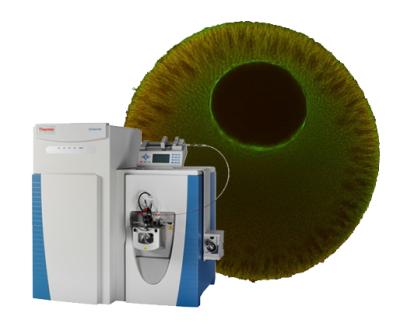Super-Resolution Mass Spectrometry Enables Rapid, Accurate, and Highly Multiplexed Proteomics at the MS2 Level.
Type
In tandem mass spectrometry (MS2)-based multiplexed quantitative proteomics, the complement reporter ion approaches (TMTc and TMTproC) were developed to eliminate the ratio-compression problem of conventional MS2-level approaches. Resolving all high / complement reporter ions (∼6.32 mDa-spaced) requires mass resolution and scan speeds above the performance levels of Orbitrap instruments. Therefore, complement reporter ion quantification with TMT/TMTpro reagents is currently limited to 5 out of 11 (TMT) or 9 out of 18 (TMTpro) channels (∼1 Da spaced). We first demonstrate that a Fusion Lumos Orbitrap can resolve 6.32 mDa-spaced complement reporter ions with standard acquisition modes extended with 3 s transients. We then implemented a super-resolution mass spectrometry approach using the least-squares fitting (LSF) method for processing Orbitrap transients to achieve shotgun proteomics-compatible scan rates. The LSF performance resolves the 6.32 mDa doublets for all TMTproC channels in the standard mass range with transients as short as ∼108 ms (Orbitrap resolution setting of 50,000 at / 200). However, we observe a slight decrease in measurement precision compared to 1 Da spacing with the 108 ms transients. With 256 ms transients (resolution of 120,000 at / 200), coefficients of variation are essentially indistinguishable from 1 Da samples. We thus demonstrate the feasibility of highly multiplexed, accurate, and precise shotgun proteomics at the MS2 level.

